New York City's Greek Independence Day Parade: Seeing Beyond the Spectacle
by Dimitri Mellos
(All photographs in this text are by Dimitris Mellos and he retains the copyright for all images)
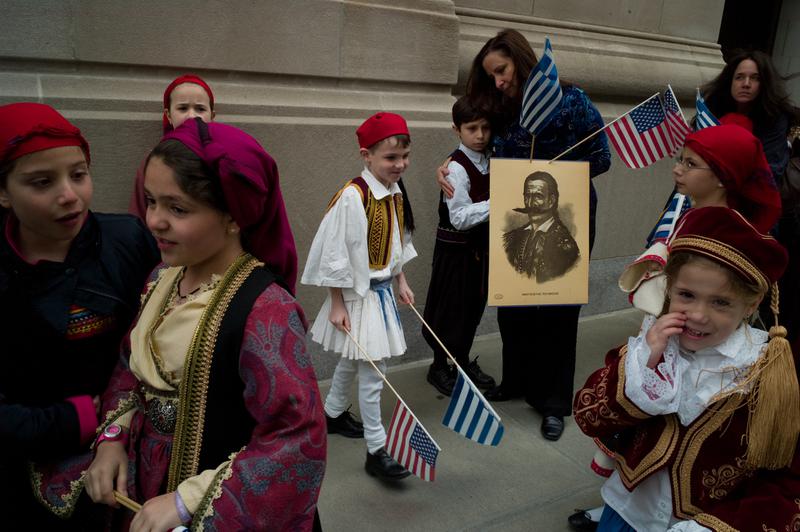
I never attended the Independence Day parade while growing up in Greece in the 1980s. I, like many of my classmates and peers, conceived of such parades as stilted, engineered spectacles, wrapped in boring rhetorical clichés, not to mention being a chore for those schoolchildren required to participate in them. Later on, as I was getting older and my understanding of ideology and geopolitics expanded, I also started seeing a potentially less benign aspect behind the ethnic pride and the commemoration of national history and struggle instantiated through such parades: I felt that legitimate national pride can sometimes all too easily slide into nationalism and xenophobia, that the love of one’s own nation and culture often lends itself to being twisted into contempt and even hatred for the Other. My suspicion toward parades was reinforced.
So in a way I surprised even myself when I attended my first Greek Independence Day parade in my thirties, after moving to New York for graduate school. I am not sure I can still accurately recall what motivated me to go to the parade that first time, and in any case I doubt I was fully lucid and conscious of my motivations even in the moment. Maybe it was a mixture of curiosity and nostalgia, or, more accurately, a fumbling, semiconscious attempt to start exploring and negotiating my own identity as a Greek immigrant to the United States and my complicated feelings toward the fatherland that I had decided, in a way, to leave behind.
I was not expecting what I saw, nor my own emotional reactions to it. The Greek parade on Fifth Avenue forced me to question my preconceptions and revise the stereotypes that I had until then taken for granted. I was moved by the earnestness and palpable excitement of the participants, and by the parade’s somewhat semi-improvised, homemade quality. This seemed almost like a grassroots celebration of culture and identity, rather than a spectacle primarily engineered and imposed by the official state from above. (It is true that the Greek state does have an official presence in the parade, for example, in the form of visiting politicians or of the Evzones that travel from Greece to march, but the parade itself is organized through the efforts of the Greek American community, much like other ethnic parades in New York City). I was intrigued and fascinated by how hard Greek Americans were trying to maintain a link to their past and the “old country,” still carrying a perhaps bygone Greece in their hearts and minds. I felt touched and a little bit sad. At times I felt I had stepped into a time machine, since some of the slogans so earnestly and nonchalantly displayed in the parade would be quite taboo in present-day Greece, such as the motto “Πατρίς-Θρησκεία-Οικογένεια,” which I saw on placards. I was also struck by how cultural knowledge and the image of the ancestral homeland are transmitted to the younger generations, perhaps some of them kids who may have never actually set foot in Greece but have nevertheless grown up harboring an imaginary conception of Greece and of what it represents.
I have been photographing the Greek Independence Day parade for almost ten years now; it has become an annual springtime ritual for me. Through my photography, I strive to further explore and illuminate some of the themes outlined above, such as national identity and pride, the commemoration and construction of history, the transmission of cultural knowledge, the sometimes thin line between ethnic pride and nationalism, and, not least, the fine balancing act between dual and sometimes conflicting identifications (in this case, Greek vs. American) that every immigrant has to engage in to a greater or lesser extent.
I focus mostly on the sidelines of the parade, because I think that’s where the real “action” takes place, at least for someone pursuing the kind of documentary photography I’m interested in. A parade, even a fairly laidback one, is by definition a staged spectacle, designed to display and perform a certain ideology and an idealized image of ethnic identity; it is a broadcast to the world, with little room for spontaneity or individuality. In contrast, the sidelines, the backstage area, the “before” and “after” of the spectacle, the space where the requirements of performance intermingle with happenstance and real life, is precisely the space where our gaze can encounter lived experience in all its beauty and complexity. I am primarily interested in observing and memorializing people’s inner emotional lives and interpersonal dynamics, as gleaned through gesture, facial expression, body language: the ineffable bond between people hailing from the same small village which they left decades ago; the web of emotions linking parents and children; the pride perhaps intermingled with awkwardness of a small child sporting a traditional costume; and of course the unique way that each Greek American attempts to reconcile the demands of a dual identity in public.
And, come to think of it, I hold that it is precisely on the sidelines, in this space of more spontaneous expression, that national heritage, culture, and character (to the extent one can refer to a cluster of traits and of modes of expression and behavior fairly characteristic of a people as their ‘national character’) can be more clearly gleaned and celebrated. The nation as such is an abstract entity – in reality it is composed of individual, unique people. On the sidelines, these individual Greeks are not lost in the faceless, regimented crowd; our gaze can pay them the attention that each one of them deserves.
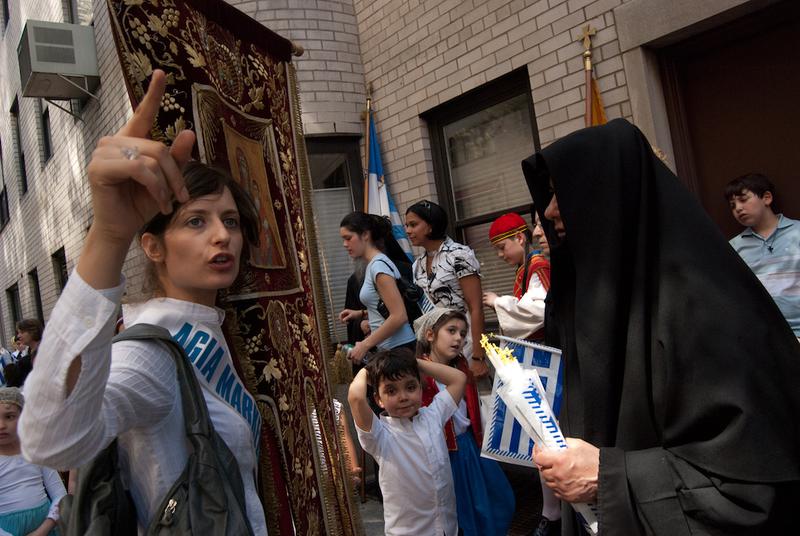
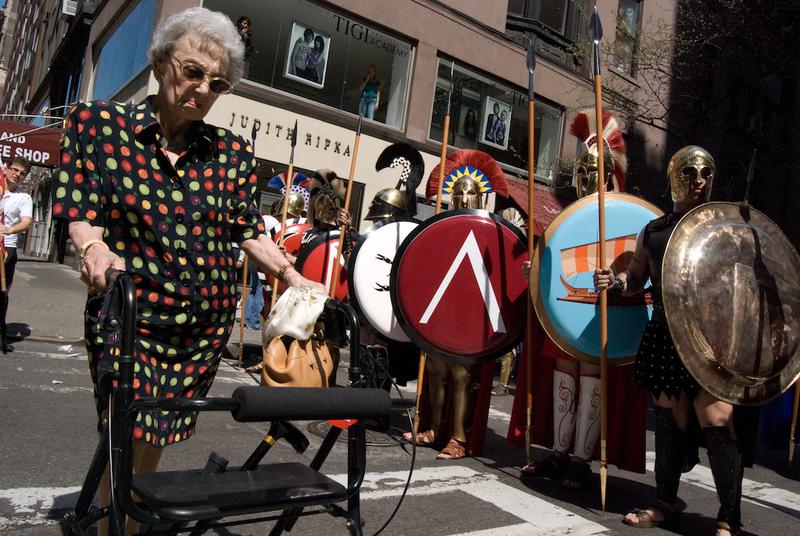
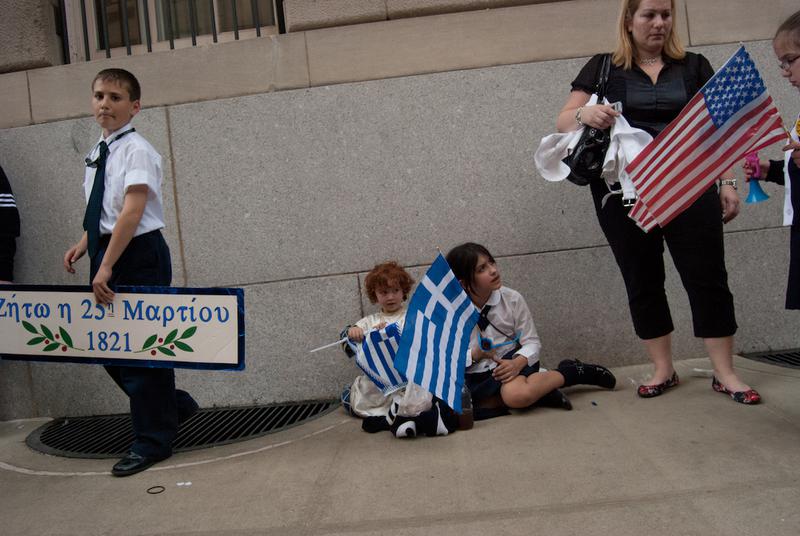
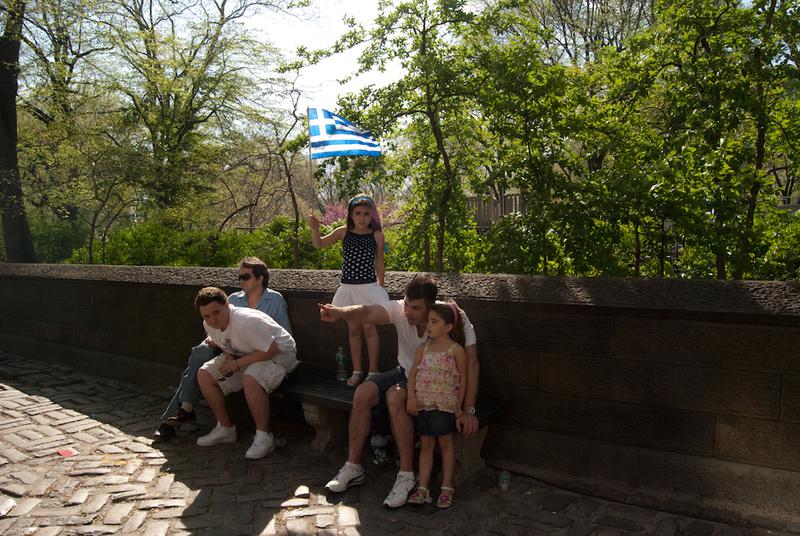

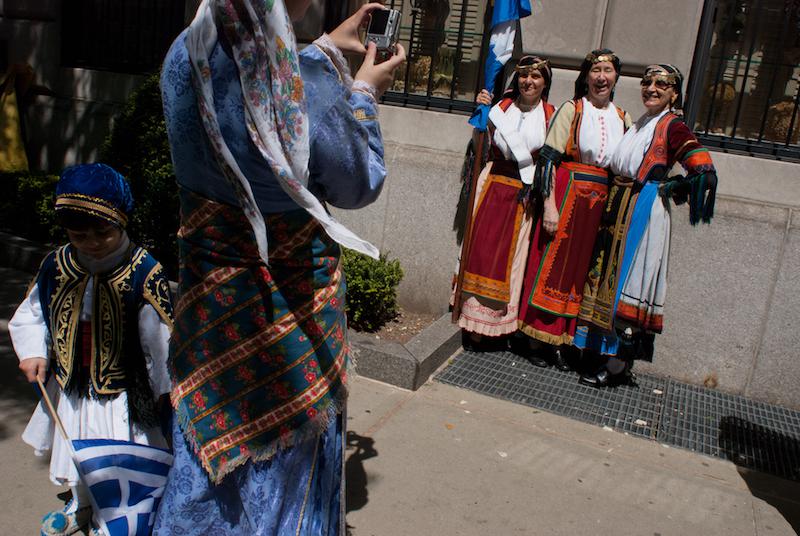
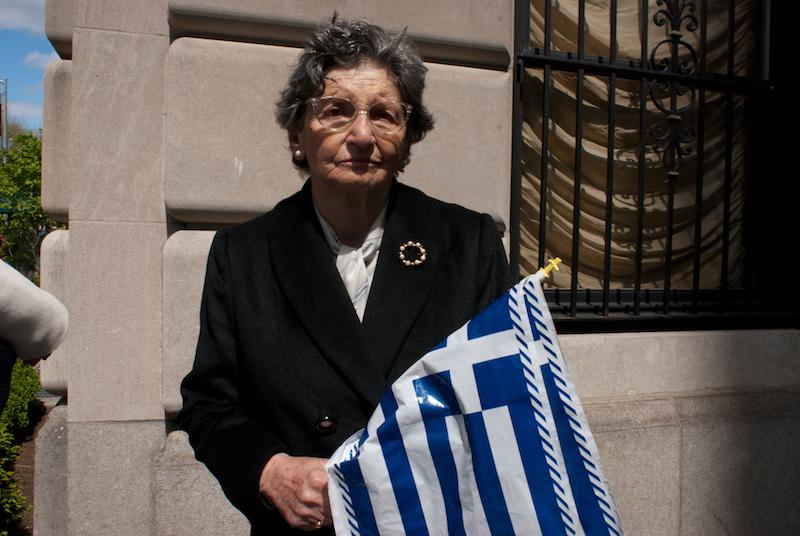
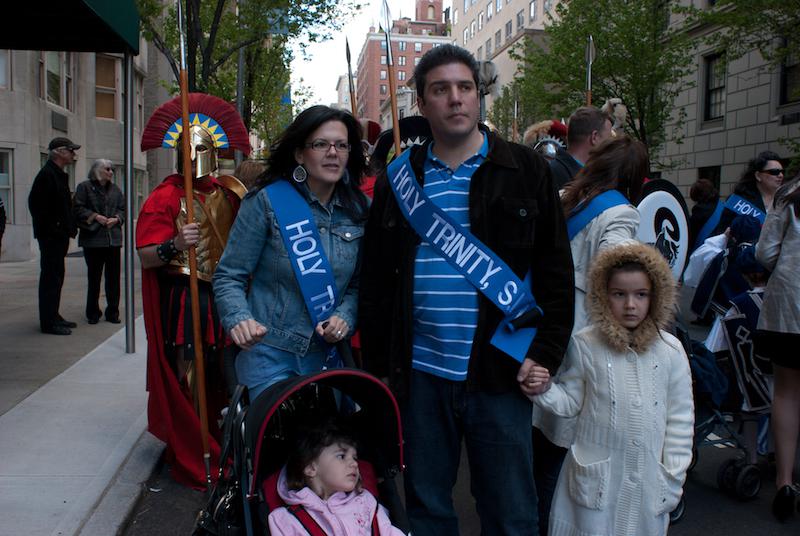
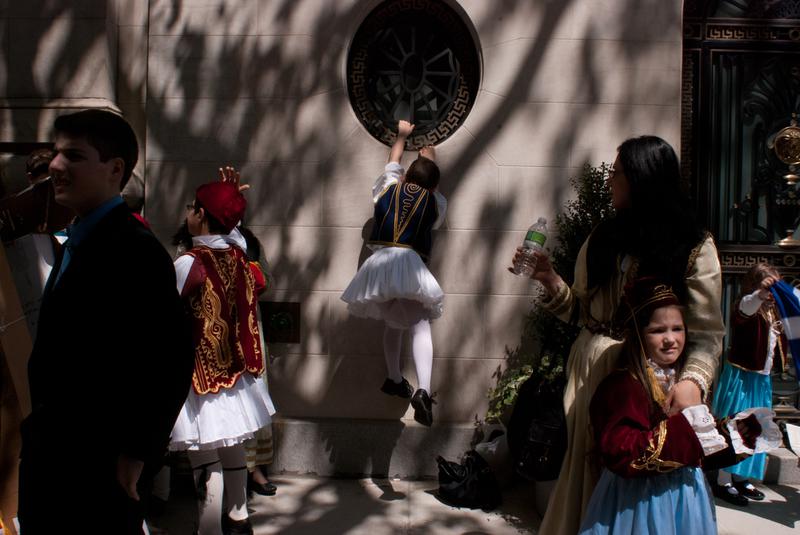
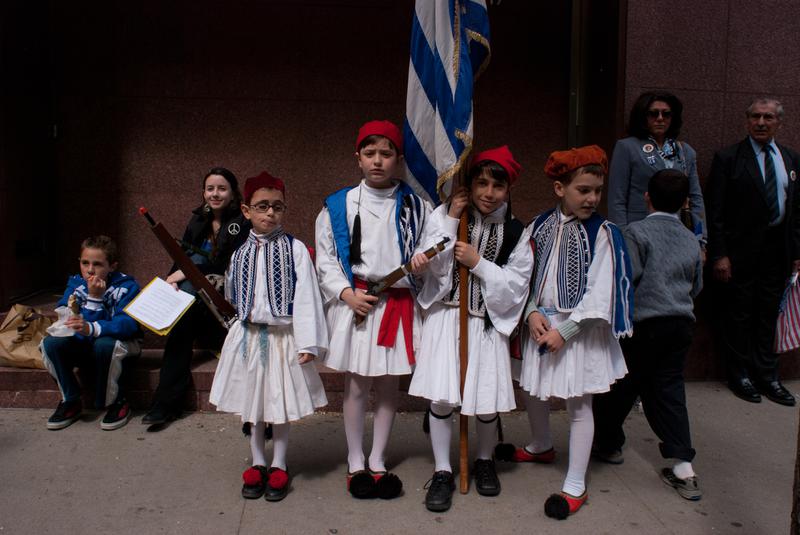
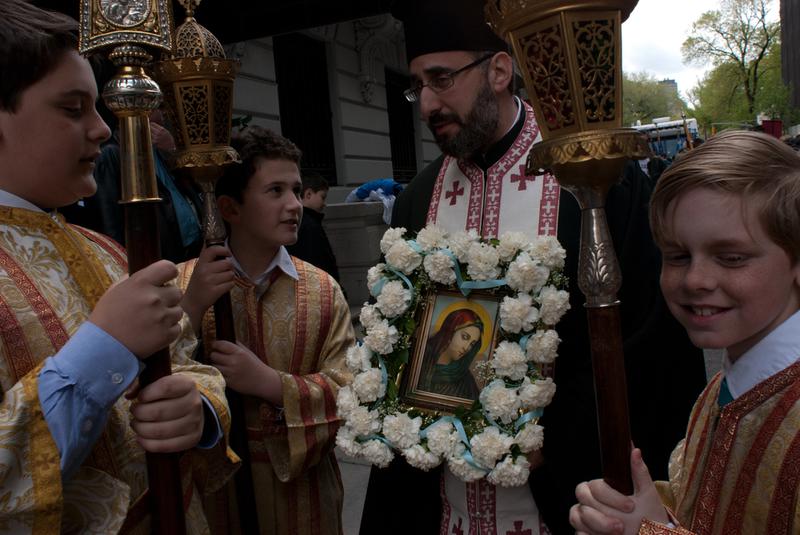
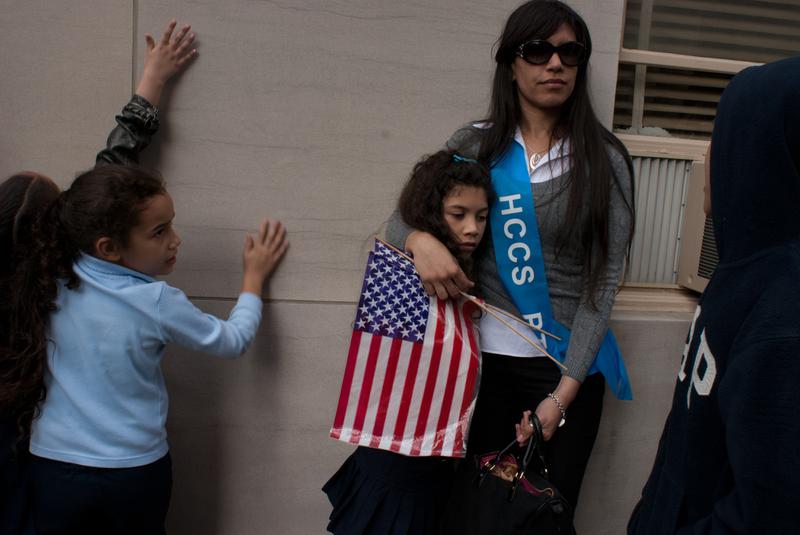
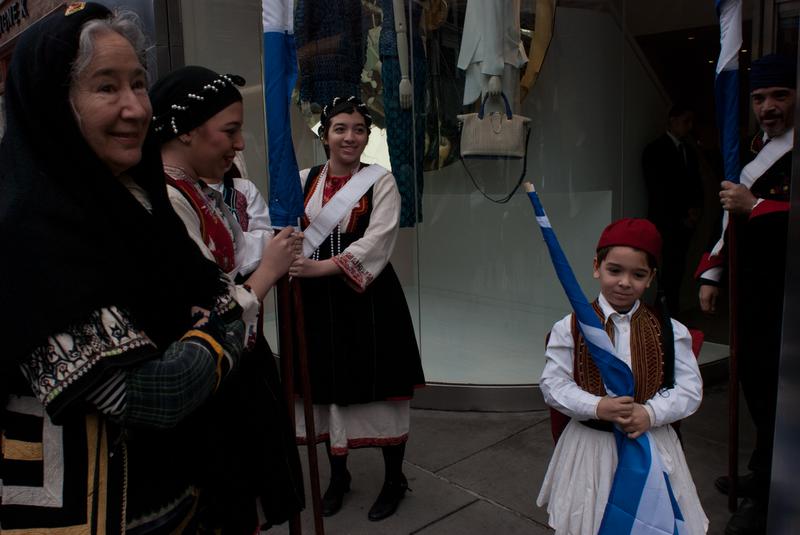


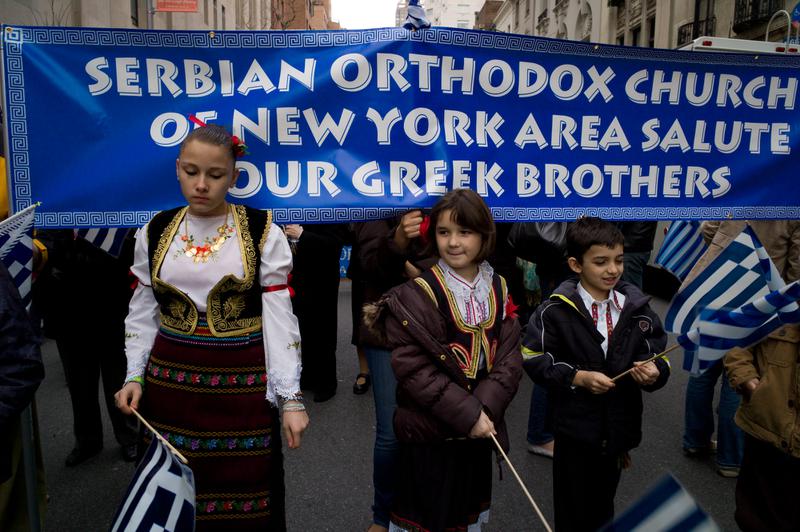

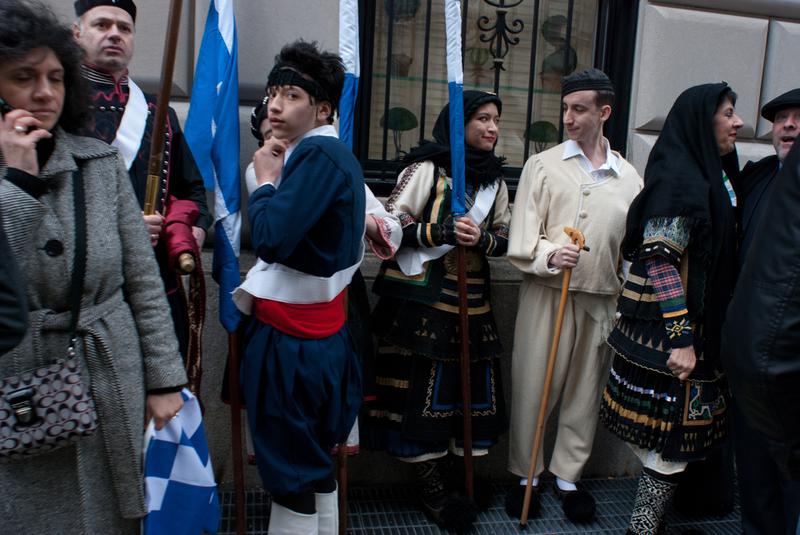
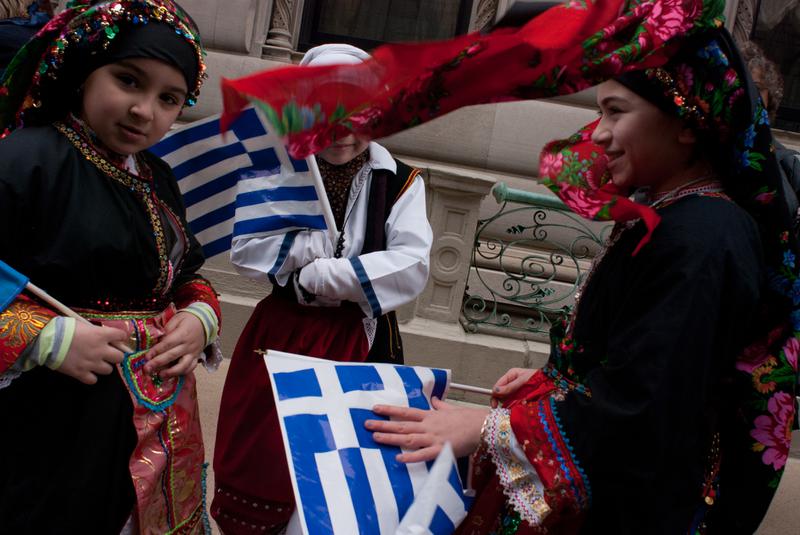

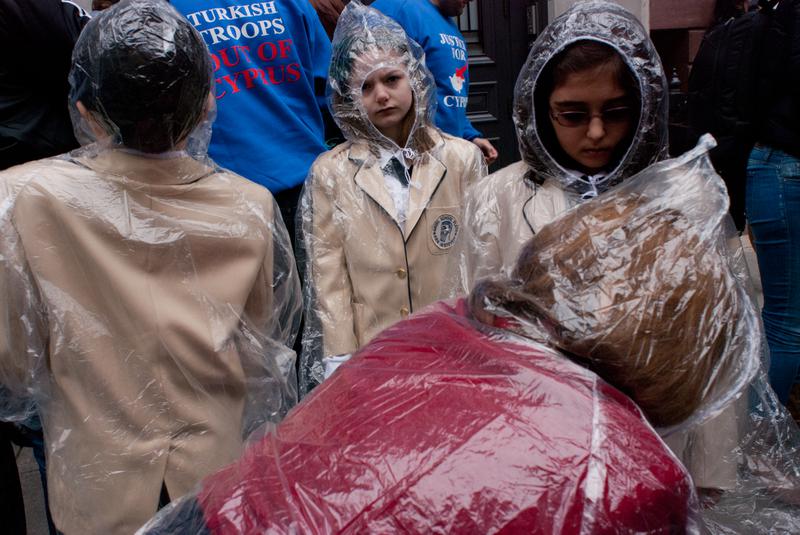
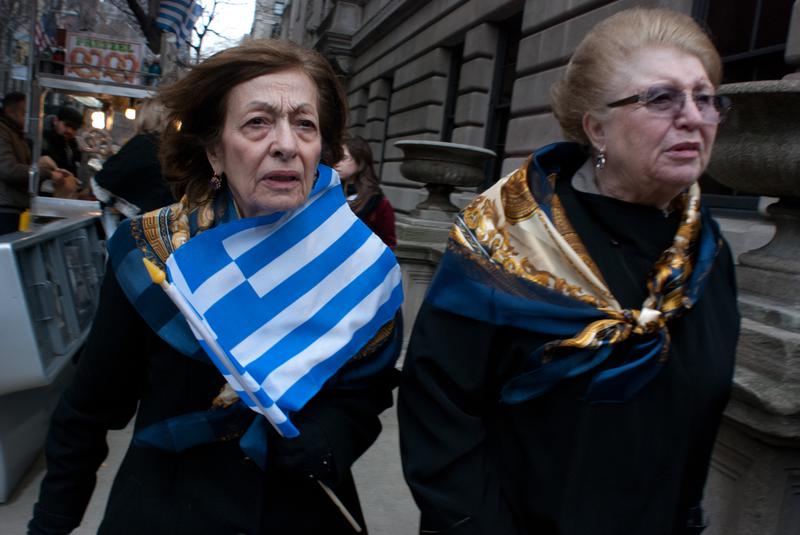

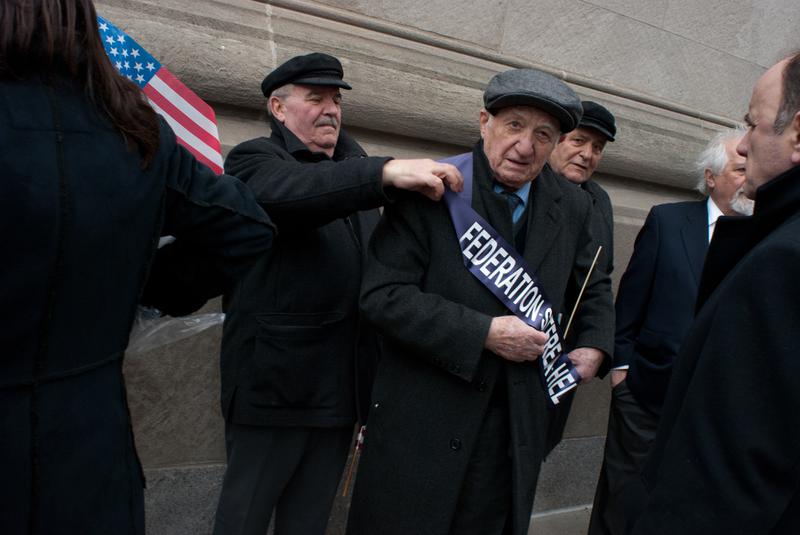
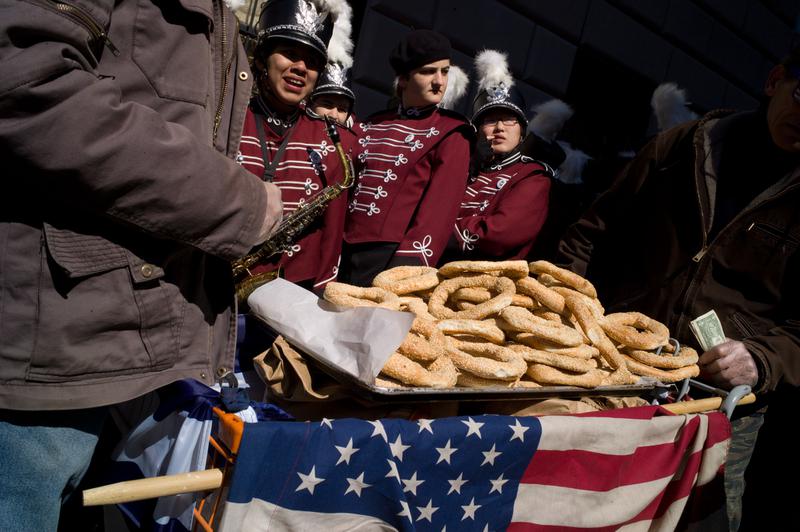
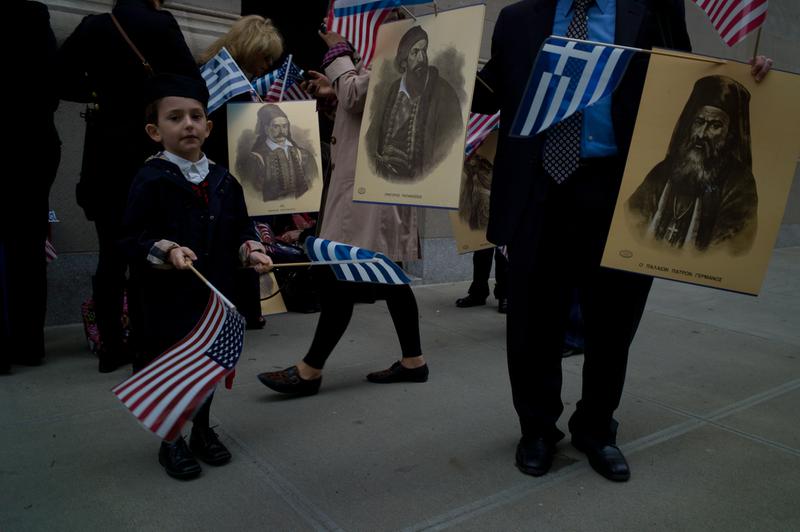
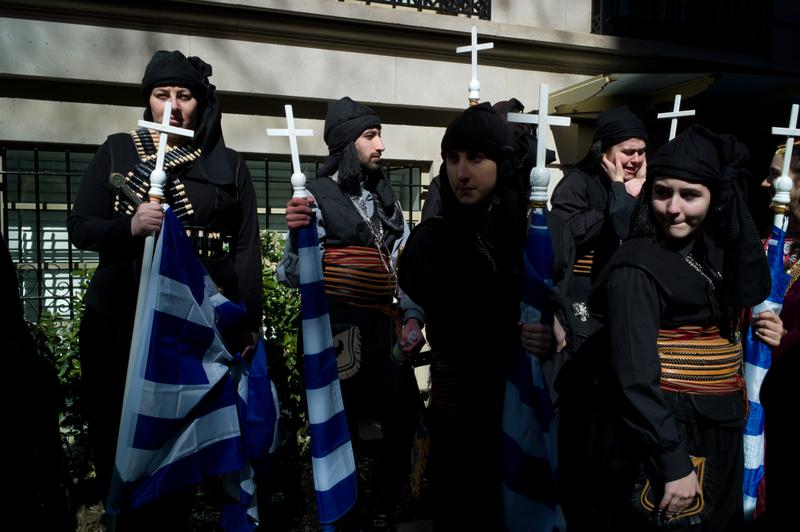
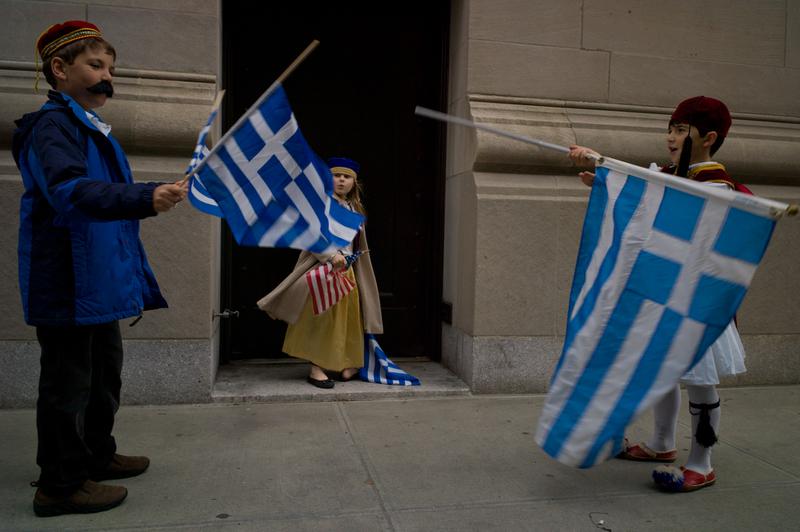
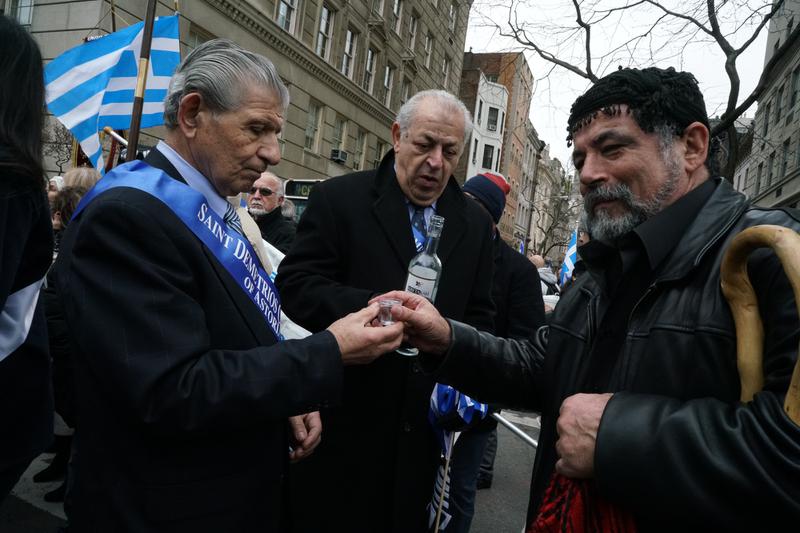
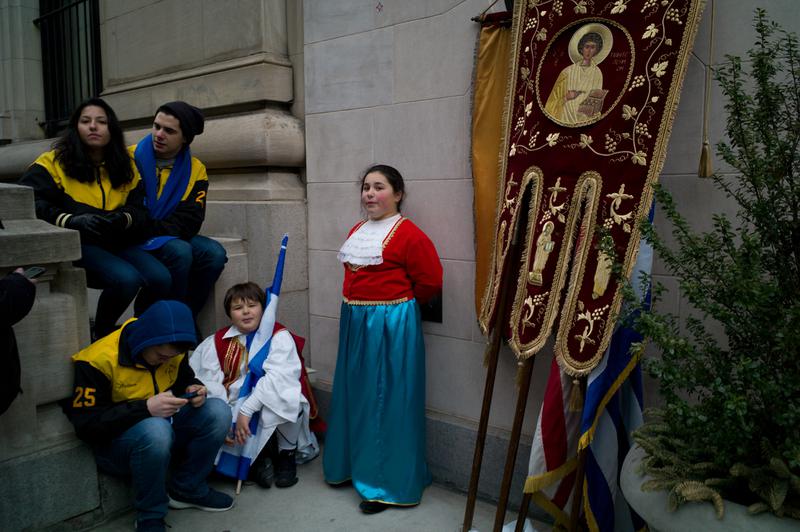
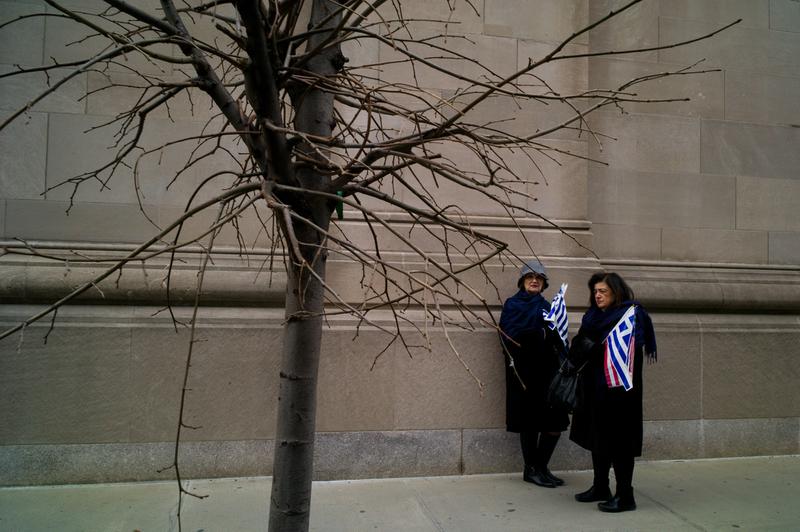
Dimitri Mellos was born in Athens, Greece, and has lived in New York City since 2005. He is a largely self-taught photographer who mainly works on long-term projects. His work has been exhibited in Greece, the United States, the UK, Australia, Spain, Portugal, Germany, Poland, and elsewhere, and is in public and private collections. His photos have also been published in The New York Times and other national and international publications. He has received several international awards for his work, including first place in the PX3 Awards, the International Photography Awards, and the WPGA Pollux Awards. He also won the 1st prize in the Fine art e-book category in the 2012 Fotoweek DC contest, was a Finalist for the prestigious Fotovisura Grant and the Magnum Expression Award, has been three times a Finalist for the Renaissance Photography Prize, and was selected for American Photography 28 and 31. He was the winner of the Palm Springs Photo Festival contest in 2015, and was honored as a Juror's Pick at the 2016 Magnum Photography Awards.
website: www.dimitrimellos.com
Instagram: @dimitrimellos
